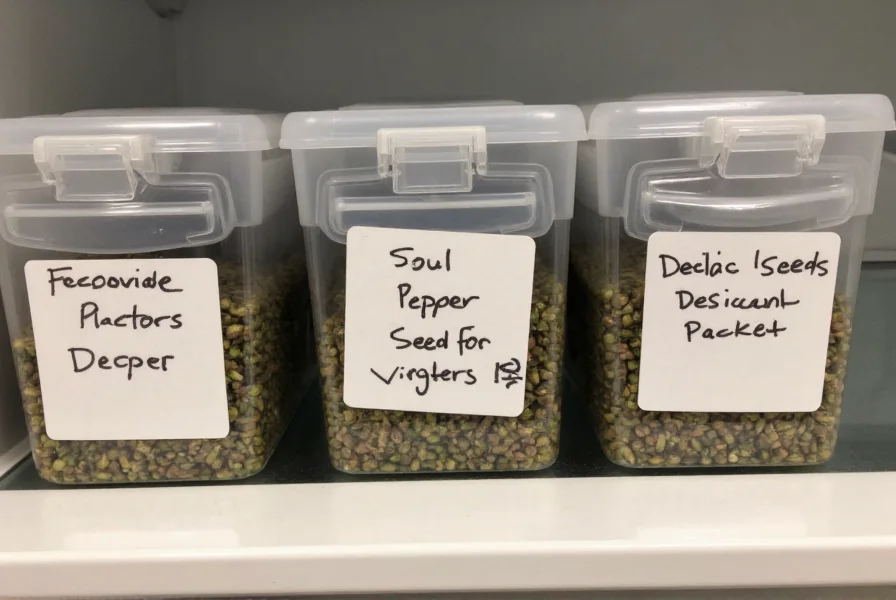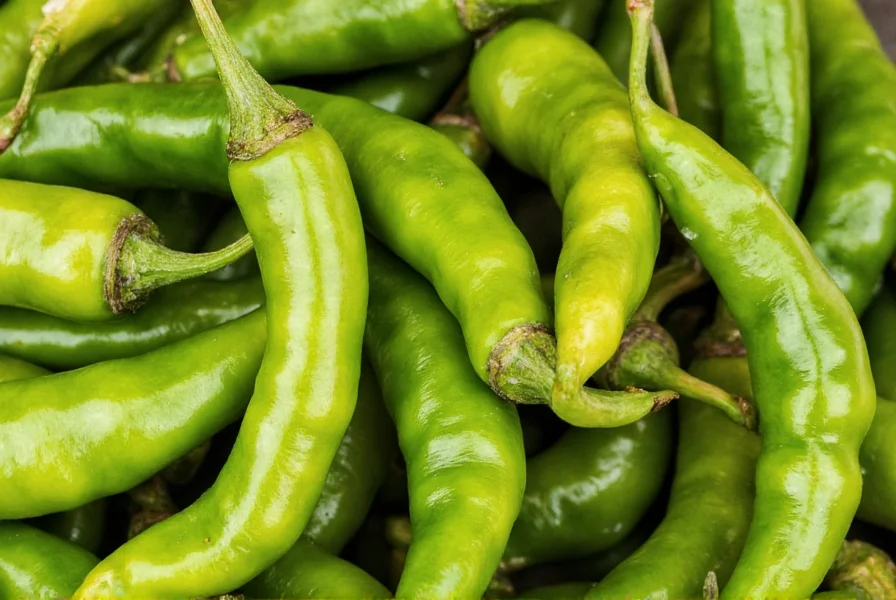Understanding pepper seeds is essential for gardeners seeking to cultivate healthy plants from the very beginning. These tiny powerhouses contain all the genetic information required to produce specific pepper varieties with distinct flavors, heat levels, and growth characteristics. Whether you're growing sweet bell peppers for salads or fiery ghost peppers for hot sauce, starting with quality seeds sets the foundation for your entire growing season.
Types of Pepper Seeds and Their Characteristics
Pepper seeds come from numerous varieties within the Capsicum genus, each with unique properties:
| Pepper Type | Scoville Heat Units | Germination Time | Days to Maturity |
|---|---|---|---|
| Bell Peppers | 0 SHU | 10-14 days | 60-90 days |
| Jalapeños | 2,500-8,000 SHU | 7-14 days | 70-80 days |
| Habaneros | 100,000-350,000 SHU | 14-21 days | 90-120 days |
| Sweet Banana | 0-500 SHU | 10-14 days | 65-75 days |
When selecting pepper seeds, consider your climate, intended use, and available growing space. Hotter varieties generally require longer growing seasons and more consistent warmth during germination. Sweet peppers typically mature faster than their spicy counterparts, making them better choices for shorter growing seasons.
How to Properly Start Pepper Seeds Indoors
Starting pepper seeds indoors gives them the head start they need, especially in regions with shorter growing seasons. Follow these steps for successful seed starting:
- Timing: Begin seeds 8-10 weeks before your last expected frost date. Peppers need warm soil to germinate properly.
- Seed Starting Mix: Use a sterile, well-draining seed starting mix rather than regular potting soil which may contain pathogens.
- Planting Depth: Sow seeds ¼ inch deep in individual cells or pots to minimize root disturbance later.
- Temperature: Maintain consistent soil temperature between 80-90°F (27-32°C) using a heat mat for optimal germination rates.
- Moisture: Keep the medium consistently moist but not waterlogged. Cover trays with plastic domes to maintain humidity.
- Light: Provide 14-16 hours of bright light daily once seedlings emerge using grow lights positioned 2-4 inches above plants.
Unlike many other vegetables, pepper seeds germinate best in warm conditions. Cold soil significantly delays or prevents germination. A seedling heat mat can improve germination rates by 30-50% compared to room temperature conditions.

Common Pepper Seed Germination Problems and Solutions
Even experienced gardeners encounter challenges when starting pepper seeds. Here are frequent issues and how to address them:
- Slow or No Germination: Peppers require warmth to sprout. If your seeds haven't emerged after 21 days, check your soil temperature. Consider using a heat mat to maintain 85°F (29°C).
- Damping Off: This fungal disease causes seedlings to collapse at the soil line. Prevent it by using sterile seed starting mix, providing good air circulation, and avoiding overwatering.
- Leggy Seedlings: When seedlings stretch tall and thin, they're not receiving enough light. Move lights closer (1-2 inches above plants) or increase daily light exposure.
- Poor Germination Rates: Pepper seeds lose viability after 2-3 years. Test older seeds by placing 10 on a damp paper towel in a warm location to check germination percentage before planting.
Storing Pepper Seeds for Future Planting
Properly stored pepper seeds can remain viable for 2-5 years. Follow these guidelines for optimal seed storage:
- Ensure seeds are completely dry before storage (moisture causes premature germination or mold)
- Store in airtight containers with desiccant packets to control humidity
- Keep seeds in a cool, dark location (ideal temperature: 32-41°F or 0-5°C)
- Label containers with variety name and collection date
- Test germination rates annually for stored seeds
For gardeners saving seeds from heirloom peppers, remember that cross-pollination can occur between different pepper varieties. To maintain seed purity, isolate different pepper types by at least 500 feet or use physical barriers during flowering.

Organic vs. Hybrid vs. Heirloom Pepper Seeds
Understanding seed types helps gardeners make informed choices:
- Organic Seeds: Produced without synthetic pesticides or fertilizers. Certified organic seeds come from plants grown according to organic standards.
- Hybrid Seeds (F1): Created by cross-pollinating two different parent varieties. Hybrids often show "hybrid vigor" with improved disease resistance and yield, but saved seeds won't produce identical plants.
- Heirloom Seeds: Open-pollinated varieties that have been passed down through generations (typically 50+ years). Heirlooms breed true from saved seeds and offer unique flavors and characteristics.
For gardeners interested in seed saving, heirloom varieties are the best choice since their seeds will produce plants identical to the parent. Hybrid seeds won't breed true, making them less suitable for seed saving.











 浙公网安备
33010002000092号
浙公网安备
33010002000092号 浙B2-20120091-4
浙B2-20120091-4